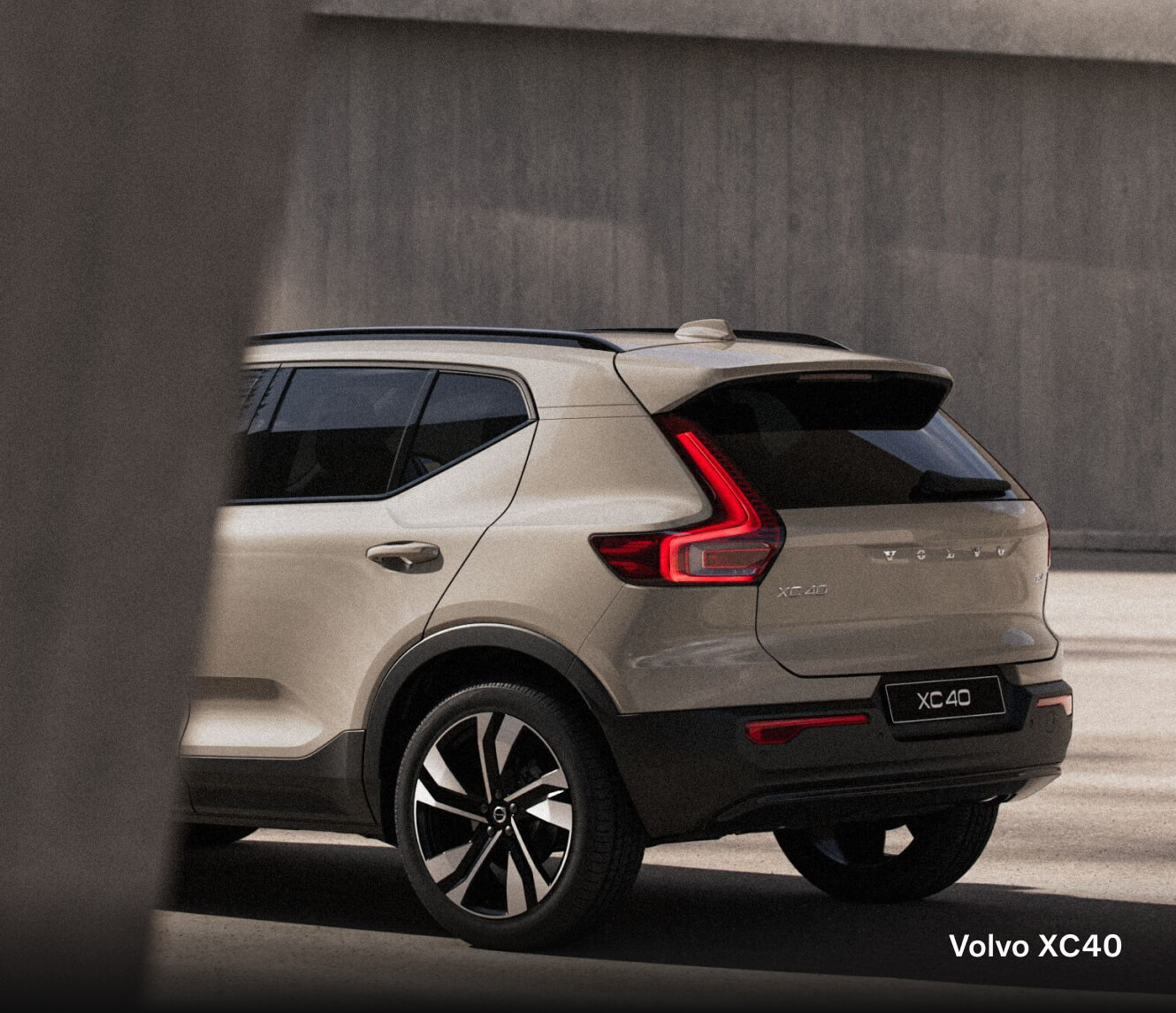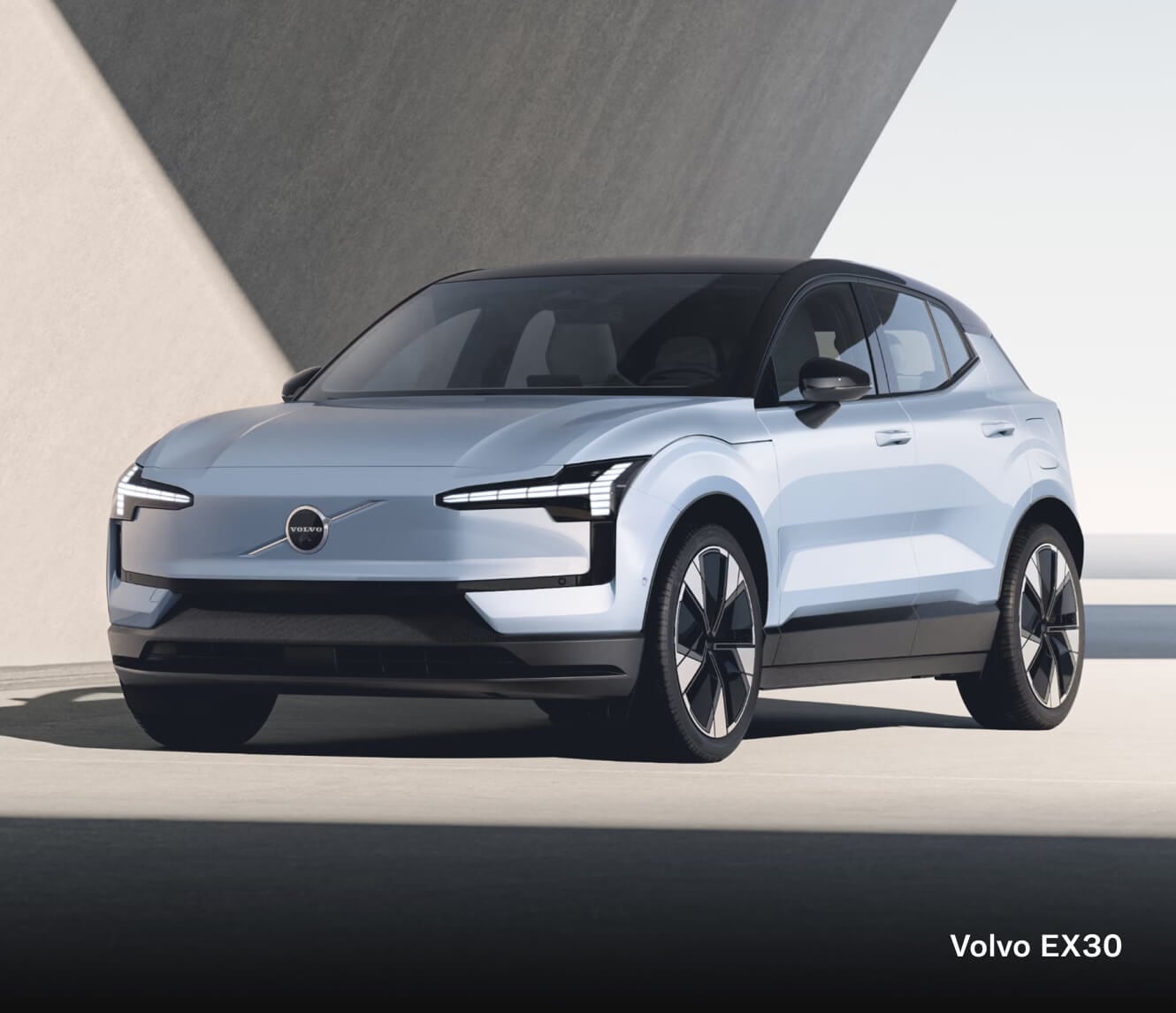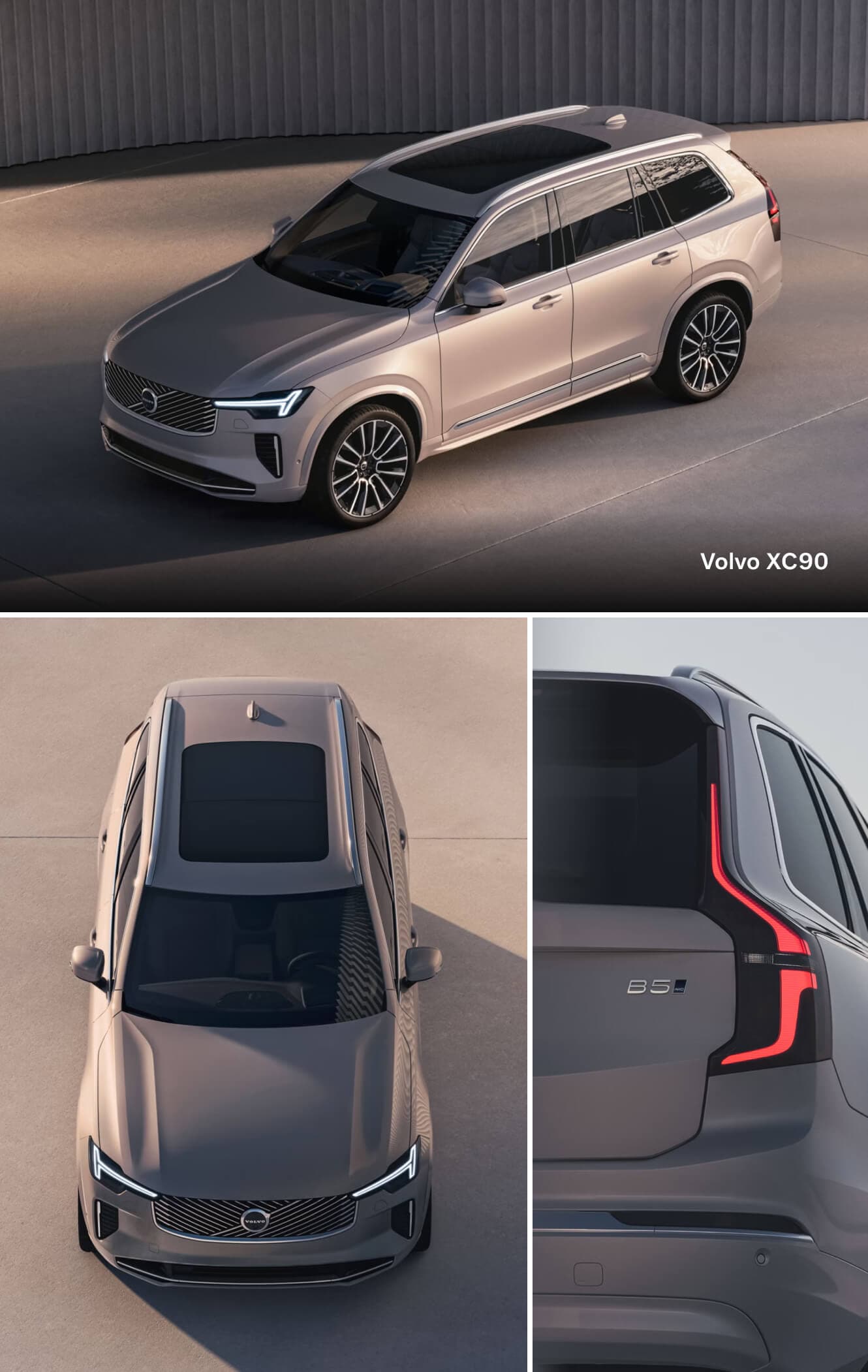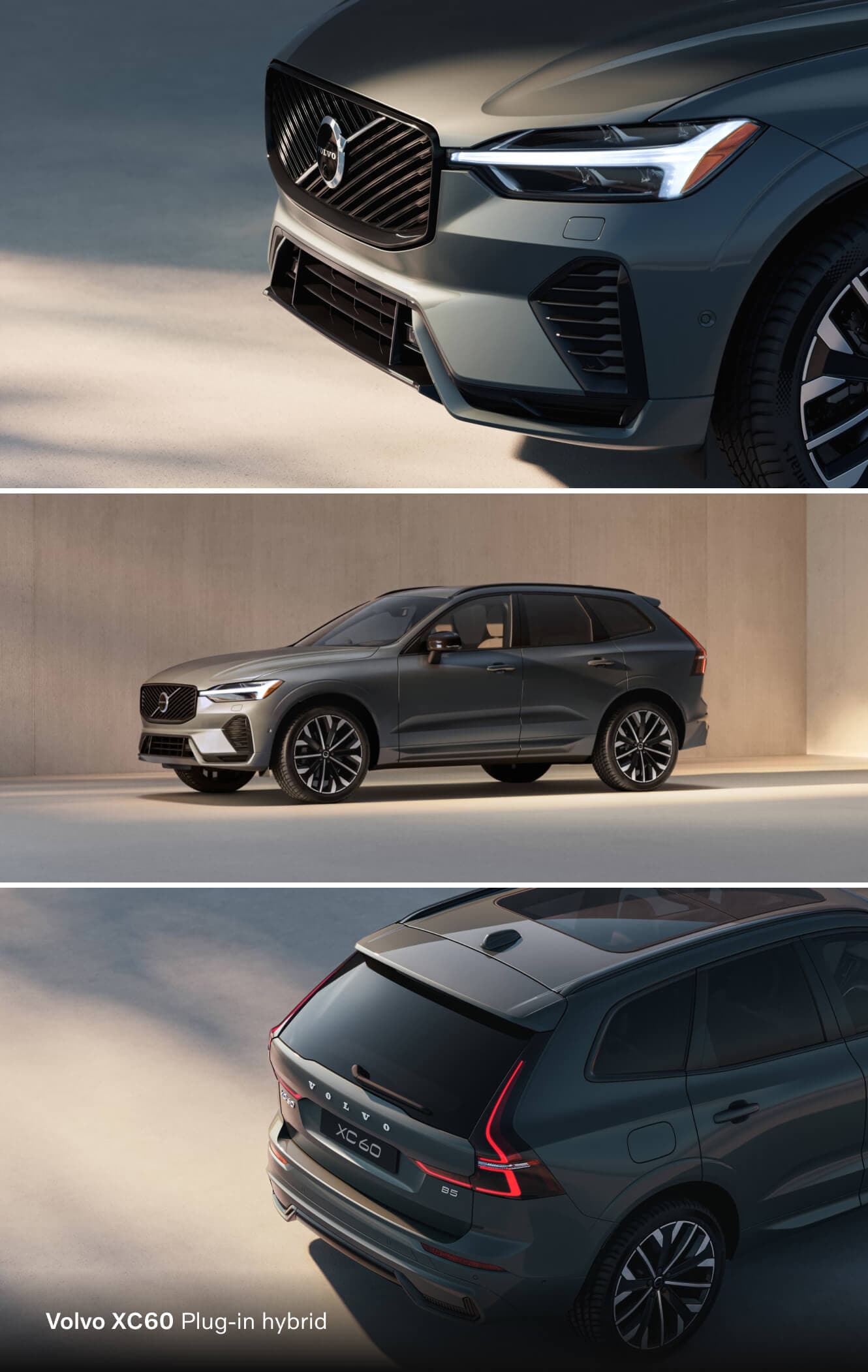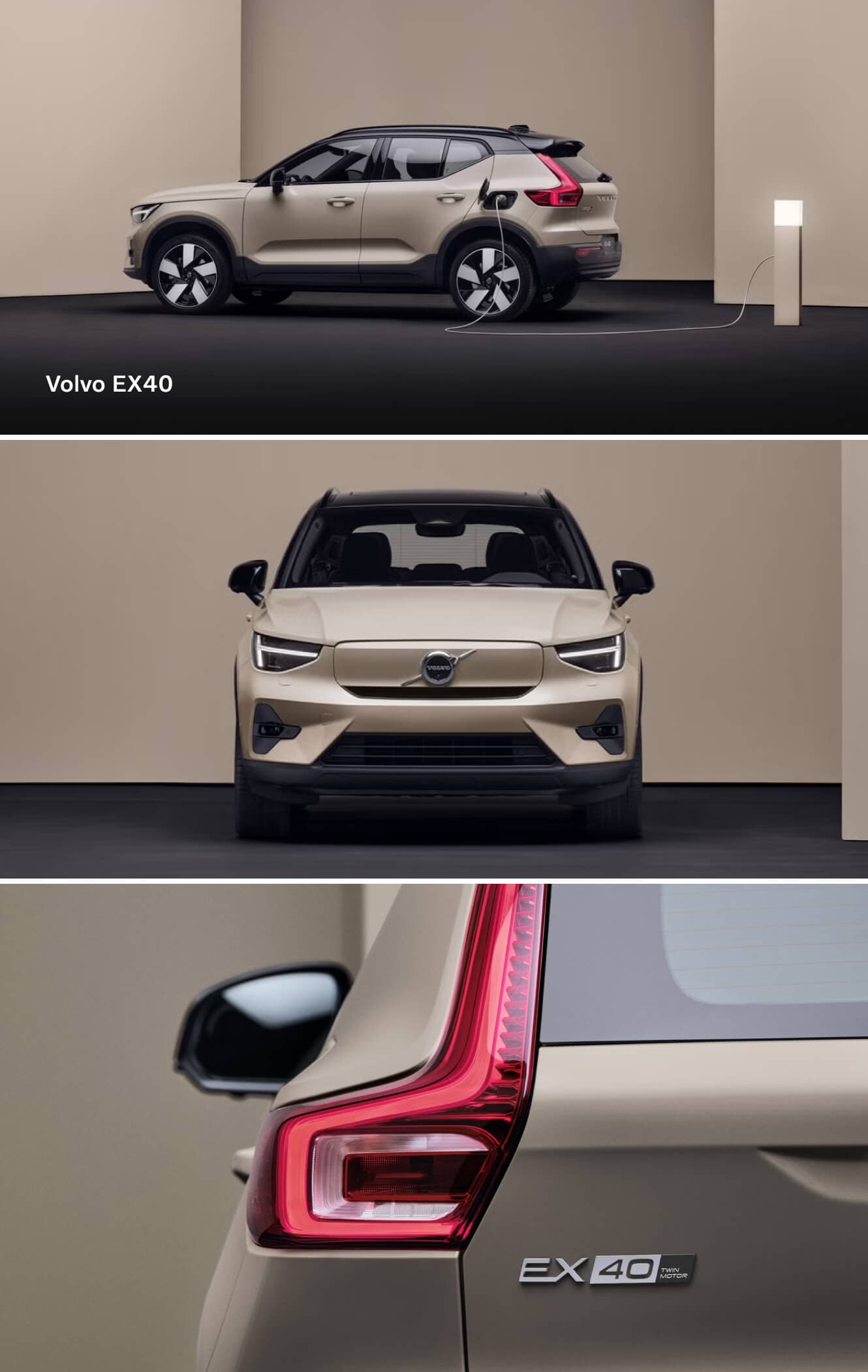Reliability Of Volvo Engines By Model And Year

Understanding Volvo Reliability
What defines Volvo reliability? It's not defined by one single factor – the answer is complex with various aspects, from engineering to warranty coverage, that come together to ensure these luxury models' dependability. For instance, Volvo models are known for their longevity, and the manufacturer backs that up with robust warranties and Complimentary Factory Scheduled Maintenance for a vehicle's first few years.1We've outlined the key Volvo reliability rating details and highlighted some of the automaker's top engines to help you better understand Volvo dependability over the years.
Join the Volvo Cars Palo Alto team as we explore the finer points. Then, visit our dealership in Palo Alto, CA, to see the latest built-to-last Volvo automobiles.
Volvo Reliability: Contributing Factors
Before we look at Volvo engines over the years, let's get a high-level overview of the factors that contribute to this Scandinavian automaker's ability to make award-winning models2 year after year:
- Comprehensive Warranty Coverage: Every new Volvo model comes with a four-year/50,000-mile New Vehicle Limited Warranty3 and a Customer Lifetime Parts & Labor Warranty.4
- Complimentary Factory Scheduled Maintenance: The automaker provides three complimentary maintenance visits for the first three years/30,000 miles of a model's life.1
- Long-Lasting Engines: You can still find many older iterations of Volvo vehicles on the road with various powertrains that have been offered over the years, including powerful, durable, and fuel-efficient options.
- Superlative Scoring: Many Volvo automobiles are recipients of prestigious awards every year. Recent examples include the new Volvo XC90 (a 2025 IIHS Top Safety Pick+ winner5 and the new Volvo XC60 Plug-In Hybrid (a 2025 Consumer Reports Recommended model6).
- Advanced Safety Tech: We would expect nothing less than safety excellence from the brand that first created the modern three-point seat belt; none of the latest Volvo models disappoint, offering a range of cutting-edge driver aids like Oncoming Lane Mitigation, Lane Keeping Aid, Road Sign Information, Slippery Road Alert, and many other systems.
- Unrelenting Adventure: Volvo models are so reliable that a 1966 Volvo P1800 holds the world record for most miles traveled with a one-owner car – a whopping 3.2 million miles.7
Now, it's time to explore some of the automaker's most popular and dependable engine options.
Volvo Engine Reliability
An often overlooked part of Volvo reliability is the construction and engineering of a model's powertrain. That's why we conducted a Volvo engine review of some of the brand's most popular motivators over the years.
5-Cylinder Engines
The Volvo XC70, which said goodbye after the 2016 model year, was available with a 2.5-liter five-cylinder engine. There are many pros and cons of Volvo five-cylinder engines: they're typically more powerful than four-cylinder options, but replacement parts can be challenging to find, as they aren't as common.
2.5-Liter 5-Cylinder Engines Pros & Cons
Pros
- Fits well in the engine bay
- Less costly to build than V-6 and V-8 engines
- Smooth power output and high torque
Cons
- Not as fuel-efficient as modern engines
- May have sluggish rev
3.2-Liter Inline-6 Engines
Speaking of the Volvo XC70, it was one of the last Volvo models to have a 3.2-liter inline-six-cylinder engine available. It was naturally aspirated and used regular gas, making it perfect for those who wanted rugged power without a high premium fuel price.
3.2-Liter Inline-6 Engines Pros & Cons
Pros
- Naturally aspirated
- Appealing gas prices
Cons
- Not as powerful as some other engines
- Repairs can be costly
3.0-Liter Inline-6 Engines
The midsize Volvo XC60 is the perfect subject for a Volvo inline-six vs. turbo four reliability comparison. The model now uses an efficient B5 AWD (2.0-liter turbocharged four-cylinder) powertrain, but earlier iterations were no strangers to the automaker's 3.0-liter inline-six engine. The result of the swap to a turbocharged four-cylinder engine is a serious boost in fuel efficiency. However, inline-six-cylinder engines tend to have a more straightforward and less costly design when it comes to repairs.
3.0-Liter Inline-6 Engines Pros & Cons
Pros
- Straightforward engineering
- Less pricey repair
Cons
- Long design may make it a tough engine bay fit
- Many moving parts
2.0-Liter 4-Cylinder Engines
Finally, there's the latest style of Volvo engines: turbocharged four-cylinder engines that occasionally get a supercharger for added fun. You can find a 2.0-liter four-cylinder turbocharged engine on nearly all newer Volvo models, including the Volvo XC40, the Volvo XC60, and the Volvo XC90.
While turbocharged and supercharged engines can be more complex to repair and maintain in general, with the Volvo brand almost exclusively using these powertrains, upkeep actually becomes streamlined with a certified Volvo service center like the one at Volvo Cars Palo Alto. They also offer a lightweight approach to driving, which typically boosts fuel efficiency.
Interestingly, 2.0-liter four-cylinder engines have been the basis for many powertrains in the manufacturer's history. A 2022 Volvo T5 vs. Volvo T6 comparison showcases a four-cylinder, with the only difference between the two being that the T6 powertrain got a supercharger. The same is also true for many B5 vs. B6 AWD comparisons.
2.0-Liter 4-Cylinder Engines Pros & Cons
Pros
- Fuel-efficient
- Lightweight
- Usually turbocharged and/or supercharged
Cons
- Sometimes requires premium fuel for optimal performance
- Requires diligent maintenance adherence
| Recent Editions | 2016 Volvo XC70 2.5L 4-Cyl | 2025 Volvo S60 2.0L Turbo 4-Cyl | 2015 Volvo XC70 3.0L Inline-6 | 2015 Volvo XC70 3.2L Inline-6 | 2026 Volvo XC60 Turbo 2.0L 4-Cyl |
|---|---|---|---|---|---|
| Horsepower | 250 | 247 | 300 | 240 | 247 |
| EPA-Est. MPG (Cty / Hwy / Comb) | 19 / 26 / 218 |
| 17 / 24 / 2011 | 18 / 25 / 2112 | 23 / 30 / 2613 |
Other Volvo Reliability Details
Warranty Coverage & Complimentary Maintenance
With every Volvo model purchase, you benefit from a four-year/50,000-mile New Vehicle Limited Warranty3 that covers replacement parts in the event of a defect. This warranty also covers genuine Volvo accessories.
Additionally, you also get three years of Complimentary Factory Schedule Maintenance at no charge to you.1 That's three maintenance visits and top-tier expert care for your first few years of ownership.
Advanced Safety Technologies
As mentioned above, we have the Volvo brand to thank for the three-point seat belt. It's no surprise, then, that all recent Volvo models come with an incredible array of advanced driver-assistance technology, often including the following systems:
- Oncoming Lane Mitigation
- Road Sign Information
- Lane Keeping Aid
- Slippery Road Alert
- Adaptive Cruise Control
- Rear Park Assist Camera
- Blind Spot Information System
- Cross Traffic Alert
- Collision Mitigation Support
- Rear Park Assist
Choosing Volvo Models for Reliability
Volvo XC90 Reliability Ratings
The Volvo XC90 is a masterclass in comfort. It's got three rows and has tons of cargo volume. The 2025 Volvo XC90 reliability is proven, as the model has – once again – won the coveted IIHS Top Safety Pick+ award.5
Volvo XC60 Reliability Ratings
The midsize Volvo XC60 is another popular pick, largely due to its safe elements and agile sizing. The most recent Volvo XC60 Overall Safety Rating from the NHTSA was five stars.14
Volvo XC40 Reliability Ratings
The smallest of this trio of SUVs, the Volvo XC40, is not to be outdone in reliability. It comes chock full of advanced safety technologies, making it perfect for small families and young professionals. Every 2026 edition is supremely capable and safe with a responsive 2.0-liter four-cylinder turbocharged engine, a Blind Sport Information System, and Cross Traffic Alert.
There are tons of other luxurious and dependable models at Volvo Cars Palo Alto. Whether you want one of the SUVs we've explored or you want an executive sedan or wagon, our team can pair you with an ideal fit.
We also encourage you to check out our used options. Your growing family may just find a pre-owned Volvo XC90 with a sleek inline-six engine or a Volvo XC70 with that unique 3.2-liter powertrain. Review our available options online and schedule your visit.
FAQ
Which Volvo engine is considered the most reliable?
Many Volvo engines are considered highly reliable, but there is no one specific engine that is named the most reliable. Most modern Volvo models run on 2.0-liter four-cylinder engines that use mild-hybrid or plug-in-hybrid technologies to offset gasoline usage. These systems tend to have less wear and tear on the engine, offering a longer lifespan and better functioning.
How does Volvo engine maintenance impact reliability?
Getting regular Volvo engine maintenance is integral to reliability. Without regular Volvo engine maintenance, a vehicle is likely to run into issues more frequently. For example, oil changes at consistent intervals will help ensure there's no sludge or debris in the system and keep the whole powertrain running smoothly. Replacing spark plugs and the vehicle's normal 12-volt battery are also essential maintenance milestones.
Are Volvo diesel engines more reliable than gasoline engines?
In general, diesel engines are considered more reliable than gasoline engines. They generally use compression ignition rather than spark plugs. That means less wear and tear on the engine itself and better operation over time. However, modern gasoline engines are hardly falling behind in durability. Many Volvo engines can last for 20 or more years when given proper care and maintenance.
Contact Us Today
* Indicates a required field
1Volvo Cars recommends that you bring your vehicle in for service at least once a year regardless of mileage. In such cases the Volvo brand will cover the recommended services at 1 per year for the first 3 years.
2This information is not verified by the official manufacturer and shall serve solely as unofficial general information. For details, visit: https://www.media.volvocars.com/us/en-us/media/pressreleases/298492/volvo-cars-awarded-the-most-2022-iihs-top-safety-pickplus-awards-of-any-manufacturer
3Warranties listed on this web page shall not be solely relied upon. Warranties may be subject to specific terms, restrictions, exclusions, and fees. Additional warranty information may be obtained by visiting the official website of the warranty provider. Contact our dealership for complete details.
4Lifetime warranty on parts is limited, non-transferable and only applies to the original purchaser. Part must be installed at an authorized Volvo dealer. See http://volvo.custhelp.com/app/answers/detail/a_id/9411/~/volvo-lifetime-parts-%26-laborwarranty for further details. Excludes consumable parts due to normal wear. See dealer for details. Non-transferable.
5Reference to this third-party claim is solely for informational purposes and not to be relied upon. For details regarding this award, visit https://www.iihs.org/ratings/vehicle/volvo/xc90-4-door-suv/2025
6Reference to this third-party claim is solely for informational purposes and not to be relied upon. For details regarding this rating, Consumer Reports members can visit https://www.consumerreports.org/cars/volvo/xc60-plug-in-hybrid/2025/overview/
7This information is not verified by the official manufacturer and shall serve solely as unofficial general information. For details, visit: https://www.volvocars.com/au/news/electrification/2023-october-one-careful-owner/
8EPA estimated range is 19 MPG city/26 MPG highway/21 MPG combined (2.5-liter four-cylinder AWD). Your actual range will vary for many reasons, including but not limited to, driving conditions, how and where you drive, how you maintain your vehicle, battery-package/condition, and other factors. See https://www.fueleconomy.gov/
9EPA estimated range is 27 MPG city/36 MPG highway/30 MPG combined (B5 FWD). Your actual range will vary for many reasons, including but not limited to, driving conditions, how and where you drive, how you maintain your vehicle, battery-package/condition, and other factors. See https://www.fueleconomy.gov/
10EPA estimated range is 25 MPG city/34 MPG highway/28 MPG combined (B5 AWD). Your actual range will vary for many reasons, including but not limited to, driving conditions, how and where you drive, how you maintain your vehicle, battery-package/condition, and other factors. See https://www.fueleconomy.gov/
11EPA estimated range is 17 MPG city/24 MPG highway/20 MPG combined (3.0-liter inline-six-cylinder AWD). Your actual range will vary for many reasons, including but not limited to, driving conditions, how and where you drive, how you maintain your vehicle, battery-package/condition, and other factors. See https://www.fueleconomy.gov/
12EPA estimated range is 18 MPG city/25 MPG highway/21 MPG combined (3.2-liter inline-six-cylinder AWD). Your actual range will vary for many reasons, including but not limited to, driving conditions, how and where you drive, how you maintain your vehicle, battery-package/condition, and other factors. See https://www.fueleconomy.gov/
13EPA estimated range is 23 MPG city/30 MPG highway/26 MPG combined (B5 AWD). Your actual range will vary for many reasons, including but not limited to, driving conditions, how and where you drive, how you maintain your vehicle, battery-package/condition, and other factors. See https://www.fueleconomy.gov/
14Reference to this third-party claim is solely for informational purposes and not to be relied upon. For details regarding this rating, visit www.nhtsa.gov
